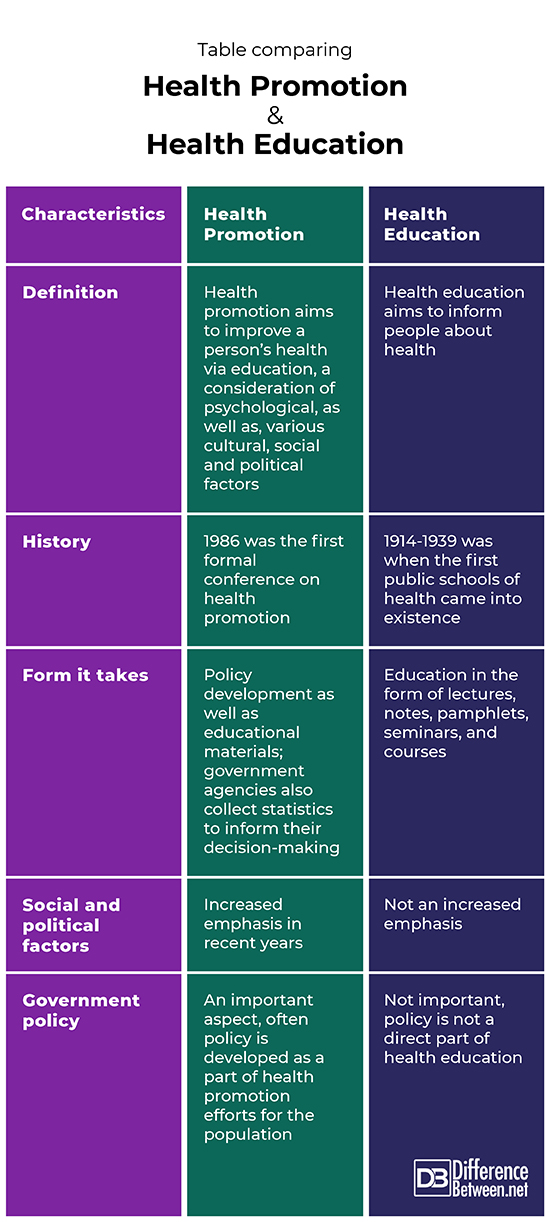In the simplest terms, health education is the science of teaching people about health and wellness. It is a comprehensive field that encompasses environmental, physical, social, intellectual, emotional, and spiritual health. It also involves sexual health education. In this article, we will cover the four major aspects of health education. It is a rewarding and essential career choice for those who want to help others maintain good health. However, before we move on to the specifics of health education, it’s important to understand its history, definition, and impact.
Information
The profession of health education consists of teaching people about their physical, social, emotional, intellectual, and spiritual wellbeing. Health education covers the entire gamut of health: physical, mental, environmental, spiritual, and sexual health. Educators are often called health educators, health advocates, or even “health scientists,” and the field is growing. Here are some common definitions of health education. But what exactly is it? And what are the various branches of the profession?
A primary objective of health education is to help people develop better habits and attitudes for achieving good health. The profession involves analyzing biological, social, and environmental factors to develop educational programs and plans. It also aims to improve the individual, community, and global health of individuals. It also helps people develop health literacy. Information about health education, therefore, helps them make informed decisions about their health and well-being. By improving health literacy, it improves the quality of life and saves lives.
Motivation
The motivation of learners to learn is influenced by several factors, including the learner’s perception of the healthcare system, significant relationships, and work and school roles. Health education programs must consider the role of these factors in educating learners. Behavioral rewards are a major source of motivation. These rewards may be extrinsic, such as the praise of an educator, or they may be intrinsic, such as personal fulfillment, gratification, or self-satisfaction.
The physical characteristics of the learning environment, accessibility of human resources, and the types of behavioral rewards can influence motivation. An ideal environment would promote positive behavior and improve compliance with prescribed behavior. However, an unfavorable environment, such as noise and insufficient privacy, could impede learning. Motivational techniques that make use of positive verbal feedback and environmental manipulation can encourage learners’ goals. Hence, it is essential to understand the various factors affecting motivation.
Impact on behavior
There is a lack of empirical studies on the impact of health education on behavior, especially with infectious diseases. While previous studies have found that health education does affect behavior, few have investigated the correct levels of student knowledge and appropriate behaviors. This study may not be ideal because it does not measure all aspects of students’ health behavior, such as the impact of infectious disease education on the general population. However, it does provide a valuable reference to help guide the promotion of preventive behaviors and knowledge.
The impact of health education on behavior is a significant topic of concern for policy makers and healthcare providers. Health education can enhance overall self-awareness of personal health and make health care more accessible and affordable. This paper is organized into sections discussing background, methodology, findings, and synthesis of results. In the final section, we examine the implications and directions for future research. We conclude that health education can have a positive impact on behavioral health.
Methods of teaching
A panel discussion is one of the effective methods for health education. The meeting is moderated by a chairman who introduces several experts and then invites the panel speakers to share their views and experiences on the subject matter. Unlike lectures, the purpose of a panel discussion is not to make a speech, but rather to create a discussion that is both spontaneous and natural. The audience is then invited to participate. It is important to remember that the number of panel members should not exceed twelve.
In this type of teaching, health educators use a variety of teaching methods to make sure the students learn the information they need. These methods are evaluated and implemented using a systematic design process. In addition to identifying the most appropriate method for each learning objective, the steps are documented in Teacher Work Samples, a format that allows the educator to provide sufficient clarity and detail to other educators. If a student experiences difficulty while learning a new concept or activity, this method may not be appropriate for them.

